
Exotica’s black sheep… or unsung trailblazer. Maybe the Iso Lele’s message is super-car salvation for the ’seventies. But are we ready? Mel Nichols reports.
I’d been looking forward to it very much: an £11.700 Italian supercar credited with 360bhp and 168mph, and a free day in which to savour it. We were going to Wales — get an early start, feel out the car on the motorway and be nicely in tune with it by the time we crossed the Severn to begin the real driving. Our only restrictions would be the occasional stops for photographs or a relaxed lunch. It wouldn’t matter what time we returned to London. The later the better, in fact: the deserted motorway could offer a traffic-free blast to cap it all off. It really did have the potential to be an idyllic day.
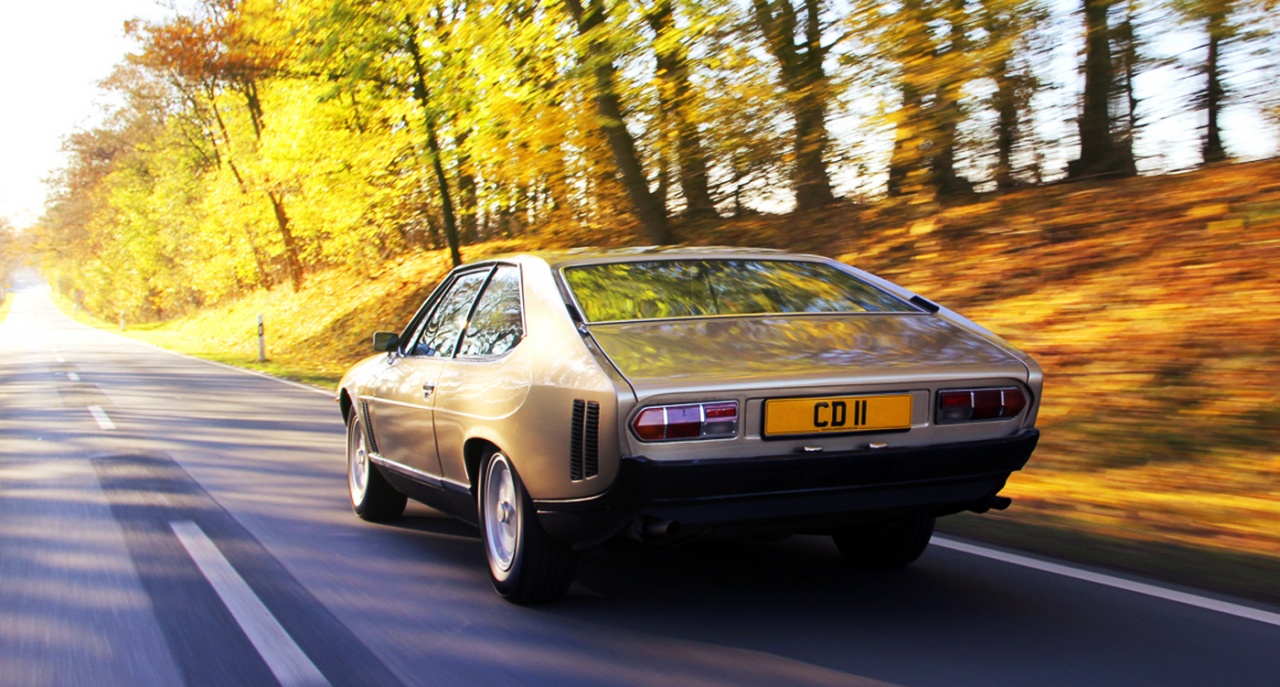
But it didn’t turn out that way: I’m sorry to have to say that the Iso Lele Sport doesn’t have the ingredients from which dreams are made. What went wrong? Was I expecting too much from Iso’s latest model? What, in fact, do you have the right to expect from a £12,000 car? You can only judge by the prevailing standards set by cars costing lesser, similar and greater amounts. In the minutes before I drove away in their gold Lele Sport, Iso Concessionaires Ltd went to some pains to point out that I should not think of it as a Ferrari or Lamborghini competitor. They were obviously somewhat concerned, in fact, about subjecting it to the evaluation of CAR magazine. There was a suggestion that we were unduly biased, towards Lamborghinis in particular.
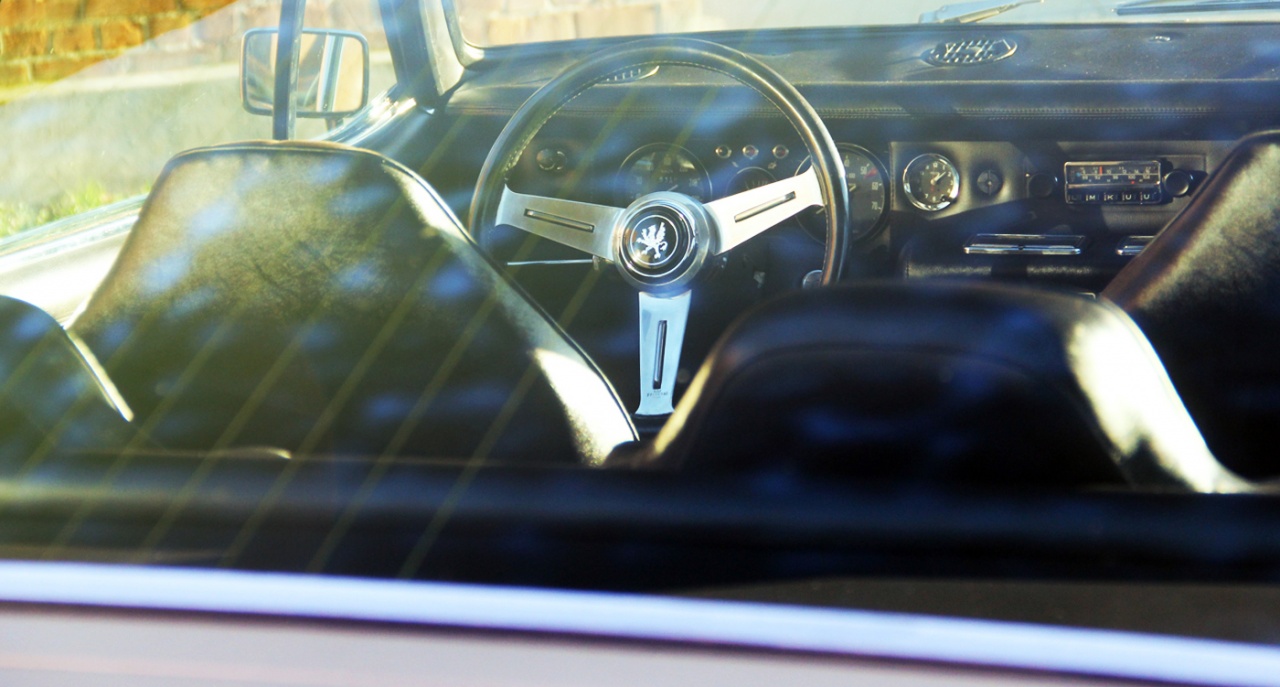
‘This car,’ said Iso Concessionaires’ managing director David Fry, an efficient and charming man, ‘is not a highly exotic machine. It has a simple V8 engine, not a complicated V12. It doesn’t howl or make exciting camshaft noises. It isn’t meant to: it’s intended to be an unfussy, uncomplicated, trouble-free car for people who don’t want the bother of a V12. It’s for the man looking for something exclusive with sporting overtones and good performance but not as flashy as a Lambo.’

I thought it a fair summary of Iso’s aims and products, and I wasn’t going into the Lele cold. I’d spent many enjoyable hours at the wheel of one of the rarest Iso’s of all, an alloy-block 7.0-Iitre Grifo. A pretty good car that one, rated at 406bhp and 186mph and excitingly enjoyable to drive in a brutish sort of way.
You had to dominate it totally: manhandle it. It went, it handled, it stopped and it rode and the engineering was sufficiently good to bring credit to the Iso name.
I thought less of the Fidia, four-door sister to the Lele and introduced at the same time in 1969. A mundane car in its road ability, it offers lots of room and comfort and quite good 100mph cruising, but there is a fistful of considerably cheaper cars that do the job much better.
How, then, would the Lele Sport shape up? I expected it to fit neatly between the hairy- chested two-seater Grifo and the Fidia, and after the Grifo and from the standards one comes to expect from £12,000 cars I think I was justified in looking forward to a good day’s motoring.
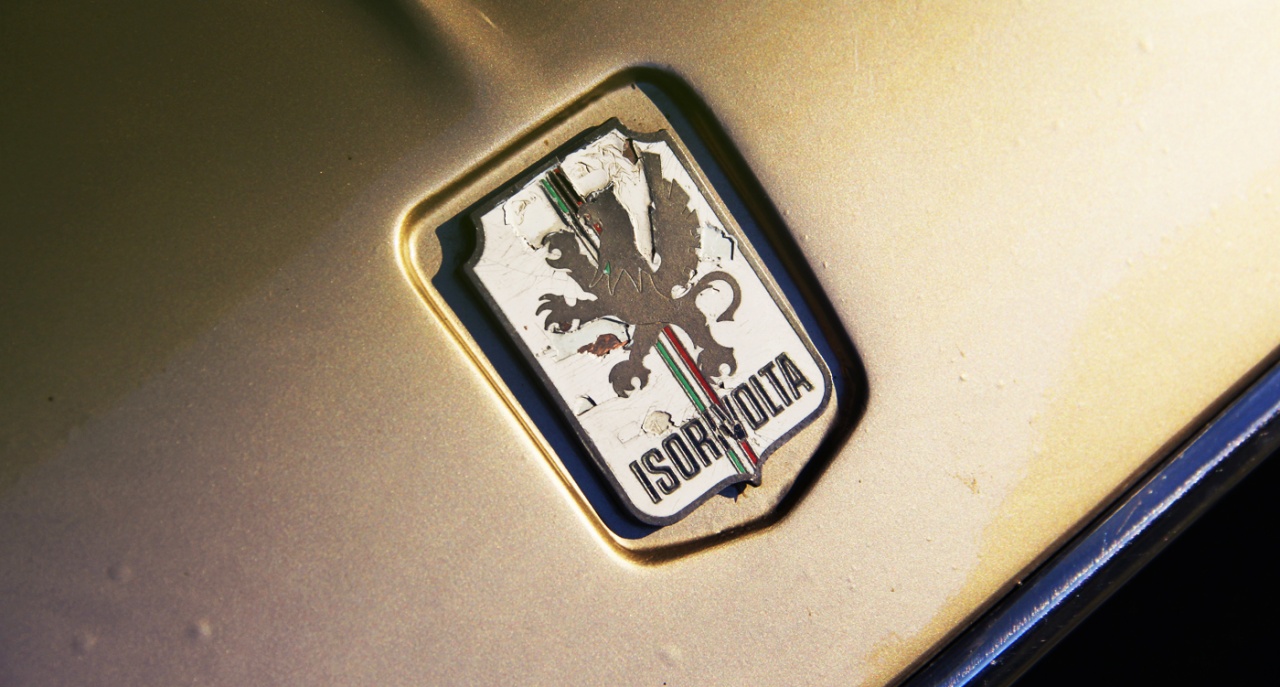
Like the Grifo and Fidia, the Lele has an integral body and chassis. The body was designed by Bertone and until very recently was built, by hand, at Iso’s plant near Milan. The concept of the car is similar to that of the Jensen Interceptor: it uses a big American V8. usually mated to an automatic transmission, although a five-speed ZF box is available as an option. In the Lele Sport, the manual transmission is standard, along with a more powerful version of the 5.7-litre engine, rally-like bucket seats, a sportier interior and dash and a big spoiler system under the nose. This makes it cost £11,731.97 with power steering, metallic paintwork and a stereo radio, compared with £10,501.23 for the standard Lele similarly optioned.

Although the Grifo, Lele and Fidia all have different wheelbases, their chassis and suspension design is similar. At the front there are unequal length wishbones, coils springs and an anti-roll bar. At the rear, a De Dion axle sprung by coils, located fore-and-aft by twin radius arms and protected from sideways movements by a Watts linkage. The brakes are four-wheel discs, inboard at the rear, but they aren’t ventilated. Isos used to run Chevrolet V8s, usually of 5.7-litres but sometimes as big as the 7.0-litre. But about two years ago the company switched over to Ford’s 5.7-litre V8 and it now powers all three Isos. In the Grifo. Lele and Fidia it is rated at 325bhp (SAE) at 5800rpm with 349lb/ft at 3800rpm. In the Lele Sport, the more potent Cobra Jot version is used and this is alleged to give 360bhp (SAE) at 5800rpm, with something like 370lb/ft of torque.
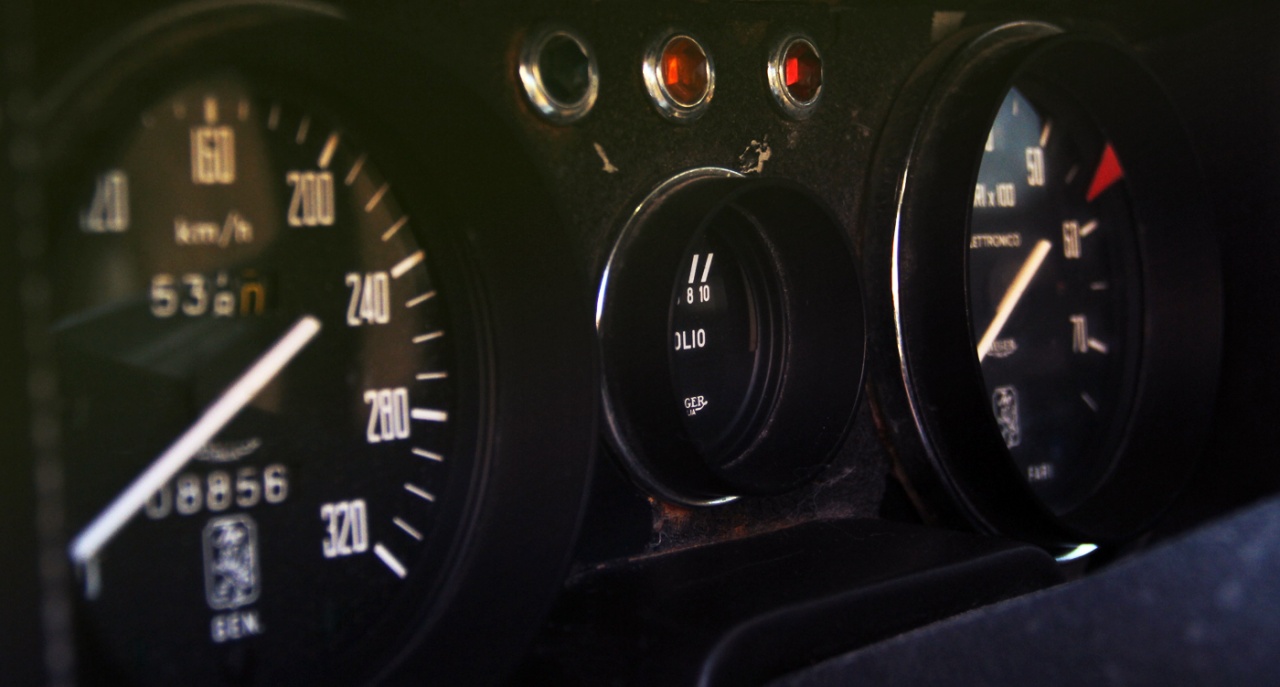
But that 360bhp is subject to considerable doubt. For a start, the discrepancy between American SAE readings and European DIN figures is huge. Second, the engine has de-tox gear enough to get it past the 1975 US regulations. Because of the de-tox gear and rules which make the companies state the real output, the US manufacturers have given up publicising the power of their engines like they used to. It’s difficult to get the corrected figure for the Cobra Jet V8: but the basic unit used in the Ford Torino and Galaxie is rated at a mere 162DIN. The Iso engine obviously has more power than that, but we can’t see there being more than 300, if it is even as much as that. A version of the engine used by Ford Australia to power the Falcon GTHO racing saloon is regarded as being one of the most powerful built, and it only had a genuine 300bhp. But whatever the Iso V8’s true output, it is still enough to give the Sport quite good performance since it will reach 100mph from a standstill in 18.3 seconds while feeling docile.
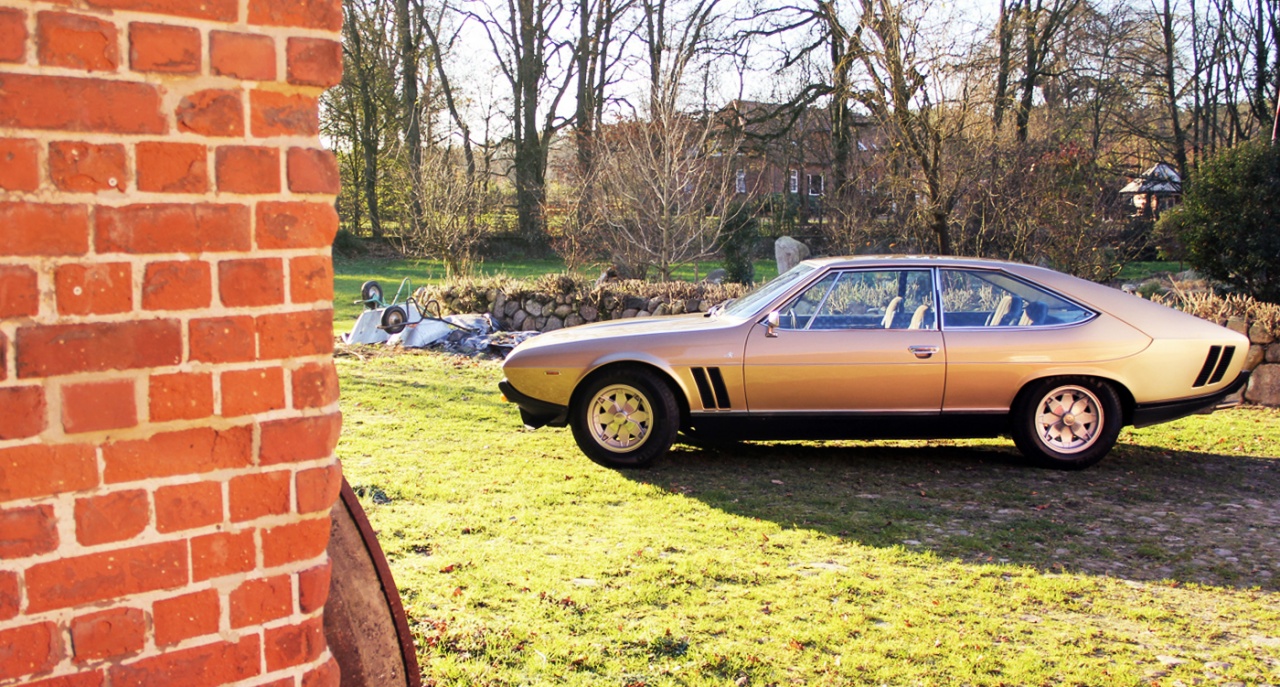
The Lele’s body is very high-waisted, and when you swing the big door open you’re conscious of dropping down into the car, with the window sills and lower edge of the windscreen coming somewhere up near your chin. It’s an inviting interior: there appears to be much better room than you expect from a coupe, and the seats look neat and comfortable. The dash is attractive, although you must immediately question the wisdom of having the minor instruments strung out on the passenger’s side, no matter how neat it might look. Adjust the Fiat 130 steering column, which lets the wheel move in and out and up and down; feel out the pedals. Note that it is a very good driving position, no oddities, everything where it should be. Then fire up the V8. No stirring sounds, just like the man said, only the grunt and immediately a low, steady idle. The stubby gear lever goes left and backwards for first; it’s the old Porsche-pattern, with the top four ratios arranged within the H. The clutch feeds out into the power, and it’s a very light pedal, not much feel and evidently adjusted right up in this case because the take-up is almost at the outer extremity of the travel. Quite a deal of throttle movement tells you the power will be easy to control, and it is. The big, hefty-feeling car glides away from the kerb, the ZF power steering making the going easy.
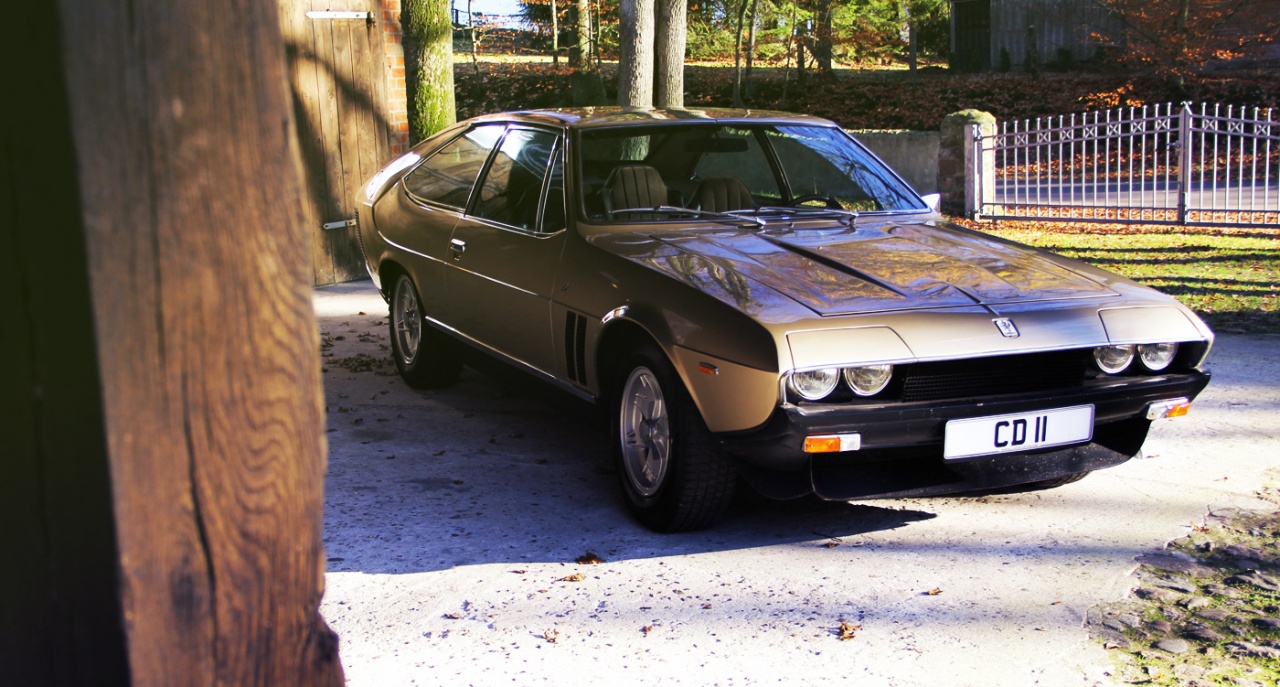
Into the traffic and you’re moving easily, instantly at home in the Iso for it is indeed an exceptionally easy vehicle to drive. The change, from second into third now, and soon fourth because there is more than enough torque to take the higher gears for city driving, is light and easy. But it has a rather soggy, sort of nothing feel to it though. Boring. With 3.4 turns lock-to-lock and a gigantic 43ft turning circle, you’re swinging the leather- covered wheel a lot going through narrow city lanes. But the steering is smooth and light enough that you don’t think twice about the big lock after the first observation. It’s a fact of life with the car, and you soon adapt to it. All-round vision is quite good, although it would be better if the seat were a bit higher.
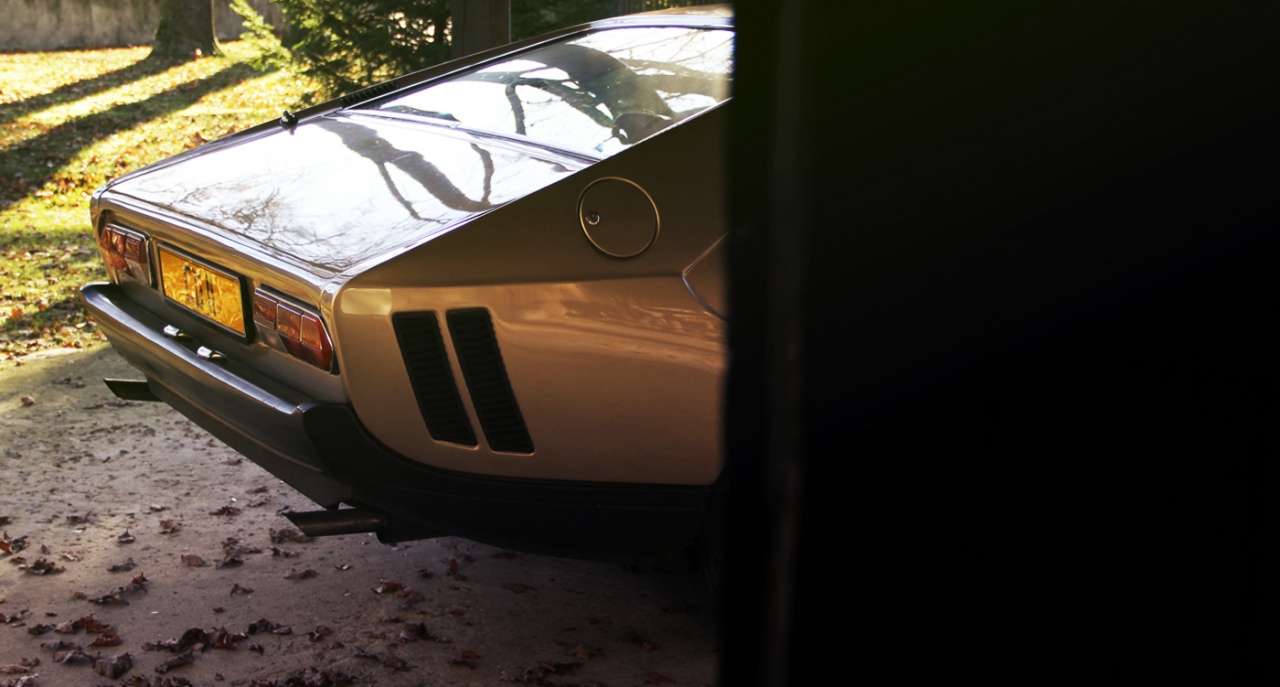
Take a moment to study the ride along a rough city street. It’s lively and firm, though not uncomfortable unless you expect something to the order of an XJ6’s or Citroen SM’s ride. You are reminded that this is a big sporting coupe, supposedly capable of 168mph and you will want it to handle more than competently. There is the usual low speed bump-thump common to this type of car and the fat. squat tyres, but I always list that as a reassuring feature rather than a poor one for it is part of the communication system between you and the road. In general, it is a fairly good ride, much quieter than the Espada at low speed, but not as supple and magnificent at speed. For the record, the Ferrari GT/4 2plus2 has a better overall ride, too.
At last reaching the motorway after being delayed an hour while the IRA bombed Westminster and making us seek out every back street between Southwark Bridge and the M4, I was able to crank the V8 right out. It was strong, certainly, but not especially powerful-feeling, and it didn’t want to rev past 5400 very eagerly. There was also the typical 5.7 Ford characteristic of slight harshness — it never has been the smoothest of American engines when used with a manual gearbox. Teamed to an automatic, as it was designed to be, you don’t notice the slight lumpiness, but even thon you’d observe that the Chrysler 440 of the Jenson is that much silkier. Holding on until the needle did roach its 5800 redline — which, after all, is only the power peaking point — brought up 45.75,110 and 133mph in the first four gears and we settled down to a cruise of an indicated 140mph in fifth to see how the car fulfilled its role as a long-legged grand tourer. In fact, the true speed was only 129mph because the speedometer was frightfully inaccurate (contrast the Ferrari GT/4, which was spot-on at 160mph), and we didn’t stay there for more than a few miles because there was far too much vibration from the tail shaft and a lot of differential noise.
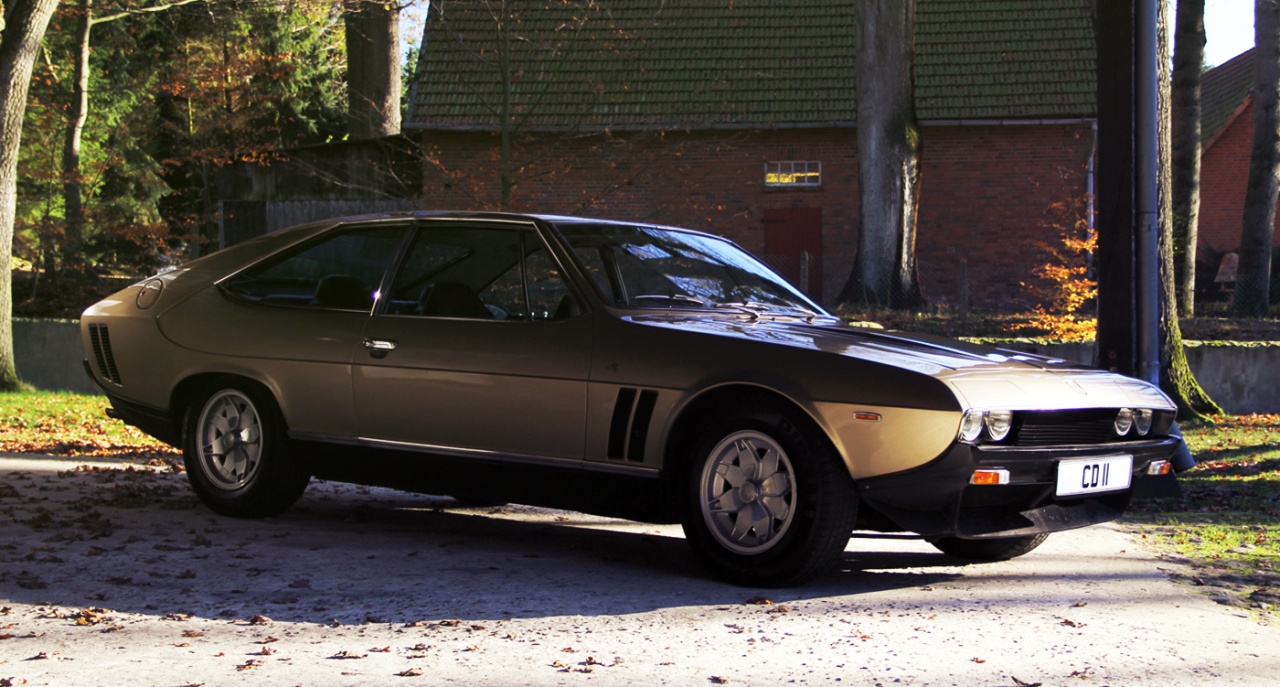
Wind noise was reasonable and the engine well-muffled, the ride excellent, stability very good and there was an overall sense of being in a competent mile-gobbler. But oh dear, that drive-line harshness! It ruined everything. Dropping the speed right back to see what happened when the car was wound right out in the gears again. I found the tailshaft problem compounded by the roughness of the engine from 5400 to 5800rpm. It was especially bad in third, and quite severe in fourth. Worse still, even when slipping back into a higher gear and running at relatively sedate cruising speeds the vibration would come in and out at different times. With it went the diff howl, and at anything over 85mph it was impossible to hear the £131 stereo set. Turn it off and forget it. Forget a fast cruise too; it was just too rasping with that vibration. Better to stick to a true 100, with 110 showing on the clock.
It would seem that the tail shaft is a problem area for Isos, because it is in three sections and has 15 lubrication points which require attention every 3000 miles, a frequent interval these days. At town speeds, the drive train displays weaknesses that are not usually found, and should not be found, in expensive cars. Drop down low in any gear, even first, and the train snatches and clunks. Power on again momentarily, as if keeping pace with erratic traffic, and you get a loud thump from the diff; back off again and there is that shunting feeling as the drive train picks up the slack once more. It wasn’t just the gold Sport that displayed this tendency either; a second one we drove was much better but still had a trace of the fault. In this area, the Lele is considerably more fussy than a Ferrari or Lamborghini V12 five-speeder; you can lug right down to 700rpm in fifth in either of them and never get a trace of drive train snatch. A common or garden Jaguar XJ6, BMW 525 E12 or 3.0, a Mercedes Benz and lots of others have the same qualities. They don’t grumble in the slightest. It is in this area that the Lele fails most as a properly desirable supercar. You can’t help being disheartened by the lack of quality in its drive train, which must surely be the essence of buying a supercar.

Our time on the motorway gave us (there were three on board) time to consider the Iso’s comfort, passenger facilities and control layout. The front seats are buckets that don’t recline (these are the sporting seats; those in the ordinary Lele are more conventional and are fully-adjustable) so they have to be comfortable, and apart from the slightest deficiency in lumbar support they are But in the back, the scene is nowhere near as good as it looks. There is fair legroom, but the headroom is terrible and the seats are arranged strangely in between the big central divider and the side armrests and wheelarches. Thus the Lele Sport isn’t a proper four-seater, but merely another 2plus2. It fails here against a Mercedes 450SLC C107, let alone the Espada. Of course, there is the Fidia if four seats are to be the prime consideration. The upholstery of the seat centres is velvety material, and is pleasing. But the outer trim isn’t the leather you expect, and there are areas — like the handbrake cover — where it is poorly designed and badly fitted. Another irritant about the interior finish is the release for the front seat backs. At first there is no apparent catch to let the squabs tip: then you realise the release is hidden under the trim; Iso were too lazy to pop the knob through the upholstery.
In front of the driver sit the two main instruments, speedo and tacho, with the oil pressure dial in between them. ’The tacho Is marked clearly enough; but the speedo is calibrated only every 25mph, runs ridiculously to 200mph and is highly inaccurate. Speaking of speed, our car did not want to run past a genuine 150mph. making a joke of the claimed 168mph — something that is all the harder to understand when you multiply the road speed per 1000rpm by the maximum rpm permitted. The answer is 157mph. a long way short of the alleged 168mph … Completing the instrumentation, there is a clock just to the left of the tachometer, then the radio, and then the four other dials for fuel, oil temperature, water temperature and volts set into the passenger’s side of the dash. The important minor controls are pure Fiat 130, and therefore are mounted on the steering column. They all work well and complement the excellent driving set-up. But the less important switchgear for auxiliary engine fan, heater fan, electric window, panel lights, interior lights and the air conditioning are a confused mess on the console. The air conditioning, a standard fitting and absolutely necessary because of the heat soak in the Iso, is easy enough to operate and works quite well, but the heater controls are very poor.
Leaving the motorway in Wales and heading for hilly country, we soon learned that the Iso’s ride was quite supple, coping well with undulations and most bumps, and that accelerating out of the towns or past slower traffic it had more pace than it at first appeared to. The engine’s torque and the wide spread of the five gears were the answer; but with a 0-60mph time of 7.7 seconds and 0 to 100mph in 18.8 seconds the Lele Sport isn’t much quicker than the likes of a BMW 3.0Si E9, and is slower than things like a Lotus Europa, Porsche 911T and S, Maserati Merak and XJ12, not to mention the Italian V12S. the Jensen SP and Aston Martin V8.
Placement of the big car came easy on the narrowing Welsh roads. The ZF power steering gave enough feel and had considerable accuracy, and while it wasn’t inspiring, the car’s handling was good. Taken hard into the bends, the Iso maintained mild but steady understeer, with such good rear end grip that neither the attempts of the body to induce roll oversteer nor full power could get the tail to move enough in most instances to neutralise the cornering altitude. The roadholding easily outshone the handling, which is probably the best way for it to be in this sort of car. While the cornering speeds were fairly high, and re was a sense of considerable security, there was not a great al of pleasure to driving the car ton twisting roads. The reason was that two problems became parent. One was the brakes, and the other the gear change. Usually in an Italian supercar, or any supercar, you get into a smooth rhythm, working down the road in a flowing sort of way with the impression that you’re driving slowly even though you’re really travelling very rapidly indeed. Part and parcel of this system are good, smooth brakes that allow you to squeeze them on right into the bend, holding the nose tight to the bank or centreline until you see the exit and, equally smoothly, can bring on the power. The balance of the car should be such that the nose tightens up into the curve the more you brake.
Not so the Lele Sport we tested. Its nose didn’t tighten up under brakes, although perfect steering control could be maintained, which is the next best choice but far less enjoyable and not as smooth. Second, the brakes themselves were terrible, producing severe juddering and offering feeble stopping power as well as a lot of fade when used hard. It is obvious that the discs badly need ventilation, and probably better pad material.
The problem with the gear change is that the throw from second to third and from fourth to fifth is more than a foot long at the top of the gearknob, and you have to feel out the hole in the gate as you seek the next ratio. Coming into a bend at speed, and striving to maintain that cool, steady smoothness that ensures the best road grip and least fuss, this rather uncertain pattern delays pick-up of a lower gear and destroys your ease with the car. You’re flying into the bend, braking, toe-heeling, and stuffing about trying to find the right hole.
Even though a tendency for roll oversteer to creep in when the car is being punted to its limits is noticeable, the amount of body roll is small; certainly not enough to upset the passengers. The suspension is communicative too. allowing you to actually feel the tyres distorting as they bite. The only time the suspension really gets caught out is over crests: then the front wallows and woggles about before settling down again. Through all this, the steering relays-a good stream of information, and as in all its other functions the Iso is easy to drive and gives the driver a lot of confidence.
After 80 miles of pretty hard driving along minor roads, we ran into a rain storm. Here, the ZF steering, thankfully, demonstrated the extent of it’s sensitivity, giving plenty of warning when the front was about to lose traction, something that happened fairly often but which was easily corrected by backing off. First and second could send the tail way out of line if too much throttle was poked into it, but once under way and into third, fourth or fifth the tail was pretty hard to get out of line. With that knowledge, the Lele could be taken along the streaming roads fairly briskly. A problem, though, was the feeble sweep of the windscreen wipers. They left a huge blindspot in the bottom right-hand corner of the screen, and the airflow swept all the freshly-wiped water straight back up onto the cleared area. Misting up proved a serious problem in the rain too: we had to keep the air conditioning running hard to keep the screen cleared. Once, when we were cold from standing outside for a few moments, we turned up the temperature to get heat and instead we got instantly heavily fogged windows.
But such trivia were to be the least of our problems. While taking photographs on a narrow stretch of road that necessitated turning every half-mile or so, the gross turning circle meant that the clutch was going in and out four and five times every turnabout as I backed and shuffled. It must have become too hot because as I swung out for yet another run, gunning on only a fair amount of throttle (and remember, the road was soaking) it suddenly let go. We had no clutch at all. I can tell you that you feel a real nit sitting broken down in deepest Wales in a £12.000 car with only 7000 miles on its clock. We managed to get the thing three miles to a remote pub where all we could do was lock up and leave it. We caught a train home.
A week later, we borrowed another Lele Sport from David Fry. The first car had been caned through a series of road tests and he was as anxious to show us that it might not be typical of the model. In fact, the second Sport, with only 2000 miles up, was very much better. Its engine was smoother and more powerful, revving out more cleanly although the familiar raggedness was still detectable. The gearbox was also an improvement, being smoother and having a slightly more positive change. Nor did it have drive train vibration under full power, although the diff clonk was there and the inevitable snatch still intruded on the overrun at very low revs. In other words, the car was a far better example but all the main things that led to my initial disappointment with the first one were still there.
Without doubt, the Iso is among the easiest exotic cars to drive; if that was the builders’ aim. then they’ve achieved their task. But then, the latest Ferraris and Lamborghinis, even right up to the BB and Countach, are in no way difficult to handle. Rather, they have considerably more flexibility than the Iso. I think the Iso’s problem is that it is so easy, so ordinary to drive that it leaves you with no real impression and offers no great driving pleasure. It is characterless almost to the point of being boring, despite its quite considerable performance, svelte looks and good front-scat comfort. It does have very secure roadholding and you’d have to do something very severe to make it mistreat you. But these good qualities are spoilt by the inadequate, juddery brakes and the drive train harshness: points that give the car something of an impression of crudeness by comparison with the best of the big saloons that cost less than it does, and the ultimate in exotic vehicles which cost more. It is not a car you’d buy for the pleasure to be gained from the way its mechanical systems work and feel: the steering, the engine, the brakes, the gearbox, the suspension. It is simply fast and expensive transport in an appealing and exotic body.
Indeed, there are those people who seek out precisely such packages. And as motoring becomes more restricted and less enjoyable, their numbers are growing. But I am not one of those people: not after having sampled the other kind of exotica — they have a character, an appeal and a quality that make the Lele look like poor value, no matter how much Iso may say their car isn’t in direct competition with them.





